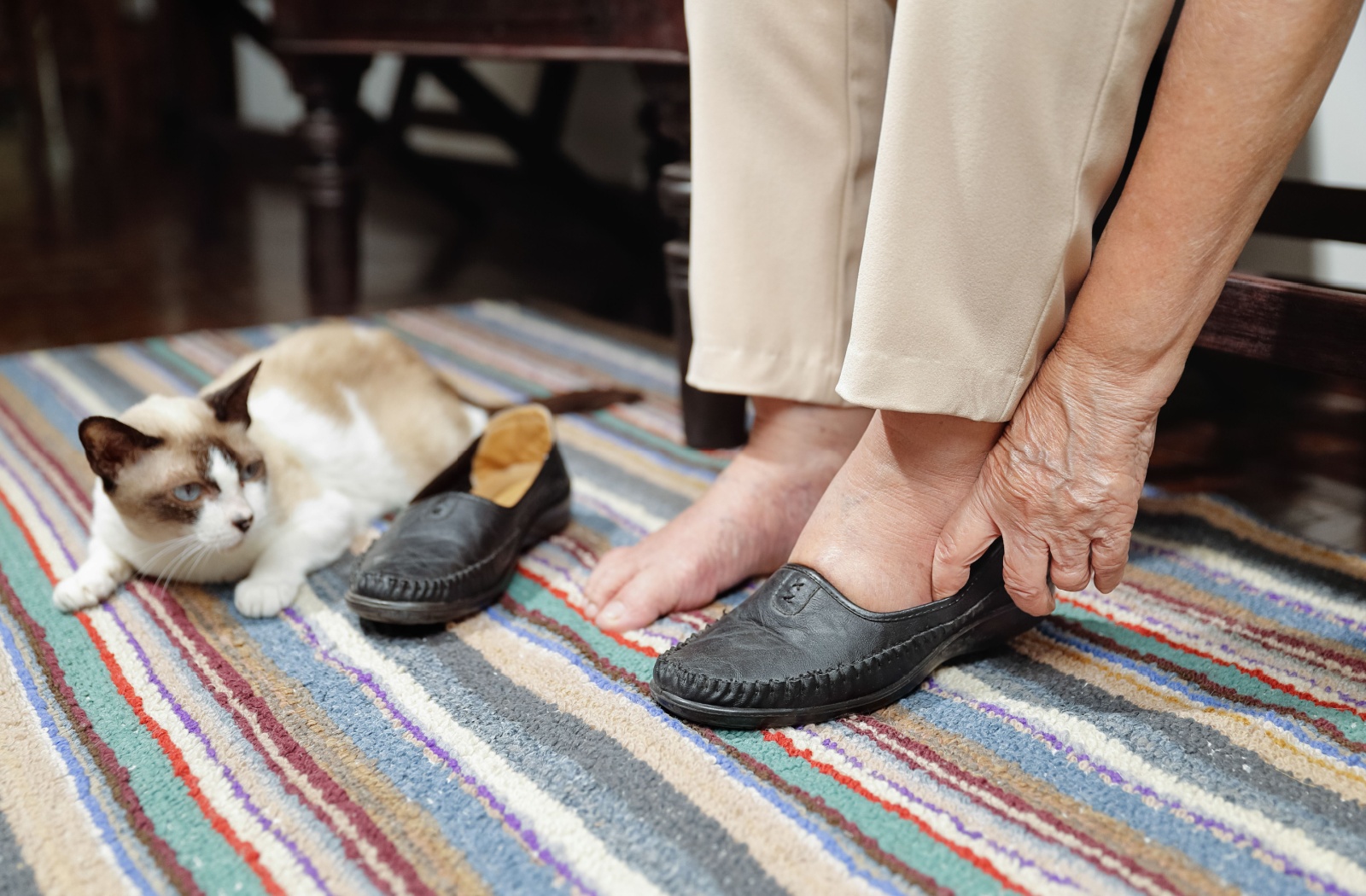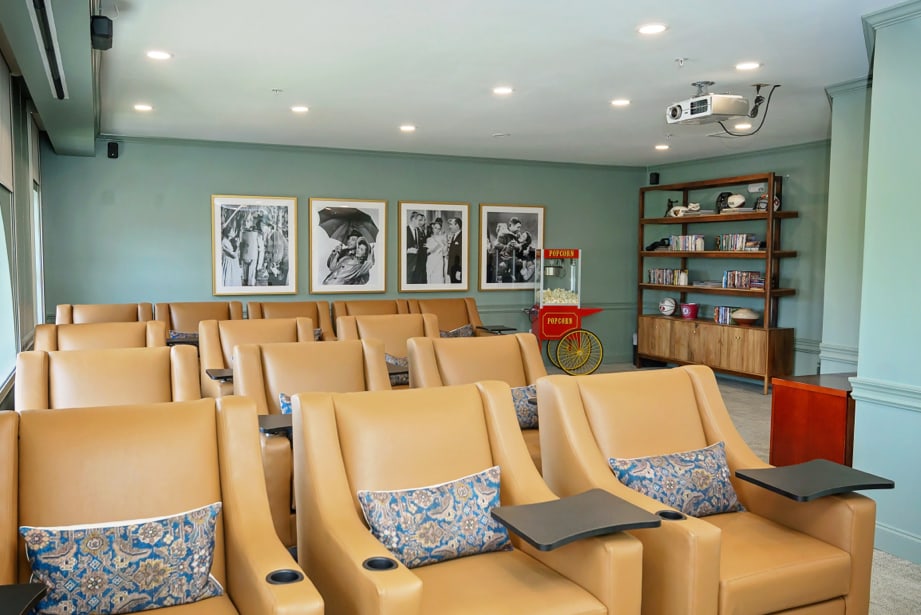Key Takeaways
- Proper footwear can reduce fall risks and improve mobility for seniors with dementia
- Look for shoes with easy closures, non-slip soles, and a comfortable fit
- Avoid high heels, loose slippers, and shoes with complex laces
- Consider your loved one’s specific needs when selecting footwear
Choosing the right shoes for someone living with dementia can make a meaningful difference in their daily comfort and safety. You want footwear that supports their mobility while reducing the risk of falls and confusion.
At Somerby St. Vincent’s One Nineteen, we understand how these practical considerations support overall wellness in senior living.
The right shoes for someone living with dementia should have easy-to-use closures, non-slip soles, and a comfortable fit that supports stability and independence. When you understand what features to look for, you can help your loved one maintain their mobility with confidence.
Why Proper Footwear Matters for Memory Care
When someone has dementia, their relationship with everyday items like shoes can become complicated. Simple tasks like tying laces or remembering which shoe goes on which foot can create frustration and confusion.
Appropriate footwear can help older adults maintain independence by removing these daily challenges. Good shoes also provide the stability needed to move around safely, whether at home or in a memory care community.
Maintaining familiar routines while adapting to changing needs helps preserve dignity and autonomy.
Comfortable, well-fitting shoes support your loved one’s ability to participate in activities and social interactions. When their feet feel good and secure, they’re more likely to stay active and engaged with those around them.
Features to Look for in Dementia-Friendly Shoes
Easy-to-Use Closures
Velcro straps offer the simplest solution for most people with dementia. They’re easy to adjust and don’t require the fine motor skills needed for traditional laces.
Slip-on designs work well for older adults who may not be able to bend over comfortably. Look for styles with elastic panels that provide a secure fit without being too tight.
Elastic laces can transform regular sneakers into slip-on shoes. They stay tied once you adjust them, allowing the shoe to stretch for easy on and off.
Safety and Stability Features
Non-slip rubber soles help improve traction on various surfaces, from polished floors in an assisted living community to an icy sidewalk after a snowy day.
Keep heel height under one inch to maintain balance and reduce fall risk. Flat shoes or those with very low heels offer the most stability.
Look for shoes that rise slightly around the ankle for added support. The higher design helps with balance without being restrictive or difficult to put on.

Comfort Considerations
Cushioned insoles can make walking more comfortable, especially for those who spend long periods on their feet. Memory foam or gel insoles can provide extra support.
Breathable materials like leather or mesh help keep feet comfortable throughout the day. Avoid shoes made entirely of synthetic materials that don’t allow air circulation.
Proper sizing becomes even more important as people age. Feet can change size and shape, so regular measurements help confirm the right fit.
Types of Shoes That Work Well
Athletic shoes with velcro closures combine comfort, support, and ease of use. They’re familiar to most people and provide good cushioning for daily activities.
Supportive slip-on shoes with textured soles offer convenience without sacrificing safety. Look for styles with a slight heel cup to keep the foot secure.
Mary Jane styles with adjustable straps are a classic style for women. The single strap across the foot is easy to manage and provides a secure fit.
Therapeutic shoes designed specifically for seniors often include extra depth, removable insoles, and diabetic-friendly features. These can be helpful for those with foot health concerns.
Shoes to Avoid for Safety Reasons
High heels or shoes with thick soles create instability and increase the risk of falls. Even low heels can become problematic as balance changes with dementia progression.
Loose-fitting slippers without back support may seem comfortable, but can cause shuffling or tripping. If slippers are preferred, choose ones with firm soles and a secure fit.
Traditional laces can become a source of daily frustration and confusion. They also create a tripping hazard if left untied or tied incorrectly.
Open-toe sandals leave feet vulnerable to injury and don’t provide the support needed for safe walking. Closed-toe shoes offer improved protection and stability.
Making the Transition to New Footwear
Introduce new shoes gradually by having your loved one wear them for short periods at first. Giving them time helps them adjust without becoming overwhelmed.
Keep their familiar shoes available during the adjustment period. Having backup options can reduce anxiety if they resist the new footwear.
Consider labeling shoes with “left” and “right,” or using different-colored laces to help with identification.
Some families find that buying identical pairs eliminates concerns about matching. Plus, when your loved one finds a shoe they love, you can easily replace worn shoes with identical backup pairs.
At Somerby St. Vincent’s One Nineteen, we understand that small details like proper footwear contribute to your loved one’s daily comfort and independence. Our memory care program supports residents in maintaining their mobility while providing the assistance they need.
Contact us today to learn more about how we create a supportive environment where your family member can continue living comfortably and safely.











